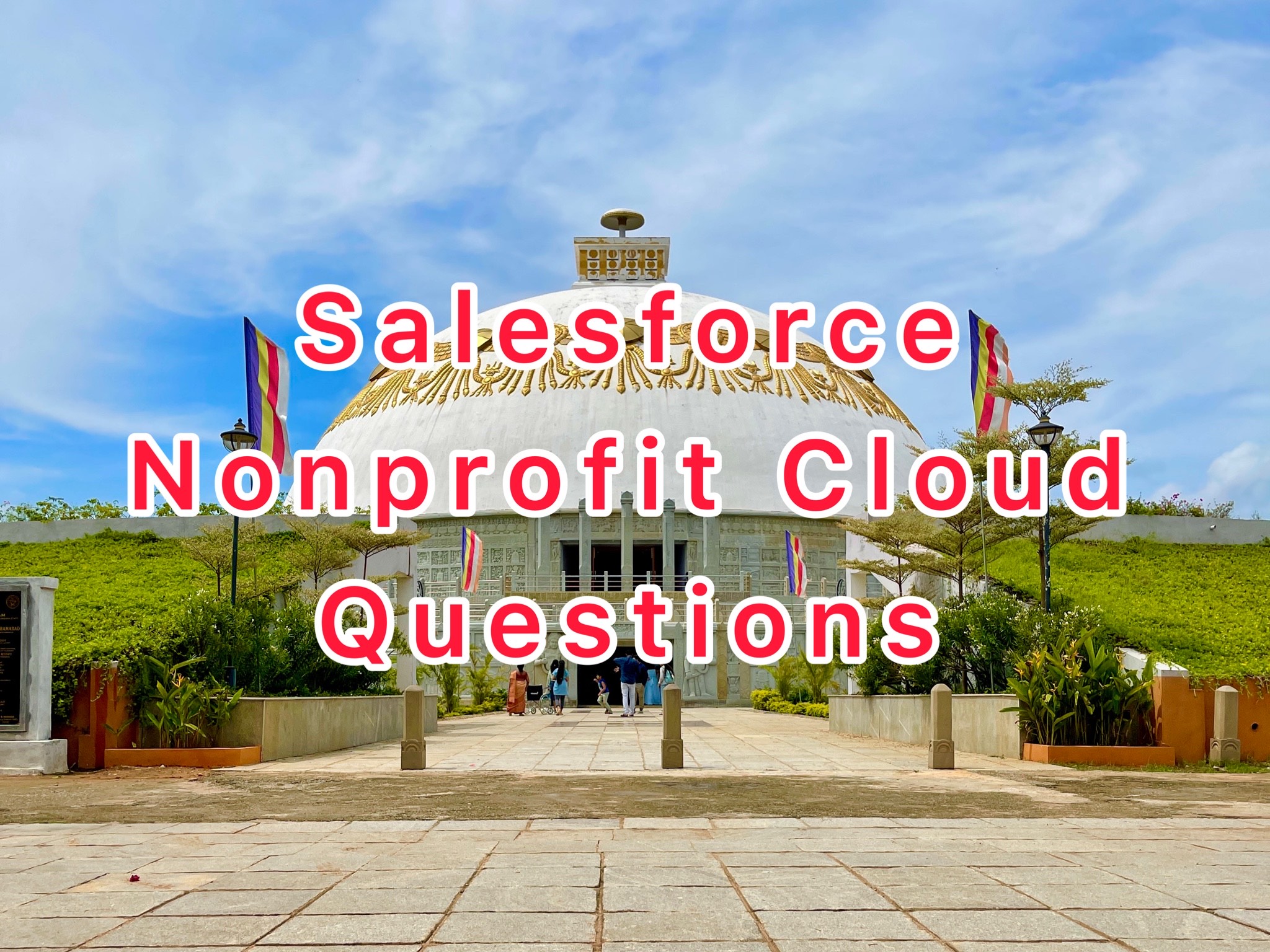Salesforce Testing Interview Questions and Answers
Q11. What are Salesforce Performance Testing Best Practices?
Salesforce performance testing is an essential step to ensure that the platform performs optimally under different loads and user scenarios. Here are some best practices for Salesforce performance testing:
- Define your testing objectives: Identify the purpose of your performance testing, and create clear objectives that align with your business goals.
- Understand the user workload: Analyze the expected user workload, including the number of concurrent users, the types of transactions, and the frequency of requests.
- Test in a staging environment: Conduct performance testing in a separate staging environment that mirrors the production environment as closely as possible.
- Use realistic test data: Use real-world data to simulate the expected workload in your performance tests.
- Measure response times: Measure the response times for all transactions, and ensure they meet the desired performance thresholds.
- Test different scenarios: Test different scenarios, such as peak usage, sustained usage, and different user locations, to identify potential performance bottlenecks.
- Use automated testing tools: Use automated testing tools, such as JMeter or LoadRunner, to simulate realistic user loads and capture performance metrics.
- Monitor system resources: Monitor system resources, such as CPU, memory, and disk usage, during performance testing to identify potential issues.
- Analyze performance metrics: Analyze performance metrics, such as response times, throughput, and error rates, to identify performance bottlenecks and areas for optimization.
- Continuously optimize performance: Continuously optimize performance by identifying and addressing performance issues, and retesting after making changes to the system.
By following these best practices, you can ensure that your Salesforce platform performs optimally under different user scenarios and workloads.
Q12. What is Test-driven development?
Test-driven development (TDD) is a software development process relying on software requirements being converted to test cases before software is fully developed, and tracking all software development by repeatedly testing the software against all test cases. This is as opposed to software being developed first and test cases created later. Test-driven development is related to the test-first programming concepts of extreme programming.
Q13. Explain Test-driven development (TDD) cycle.
The Test-driven development (TDD) process follows following sequence:
- Add a test. The adding of a new feature begins by writing a test that passes iff(if and only if) the feature’s specifications are met. The developer can discover these specifications by asking about use cases and user stories. A key benefit of test-driven development is that it makes the developer focus on requirements before writing code. This is in contrast with the usual practice, where unit tests are only written after code.
- Run all tests. The new test should fail for expected reasonsThis shows that new code is actually needed for the desired feature. It validates that the test harness is working correctly. It rules out the possibility that the new test is flawed and will always pass.
- Write the simplest code that passes the new testInelegant or hard code is acceptable, as long as it passes the test. The code will be honed anyway in Step 5. No code should be added beyond the tested functionality.
- All tests should now passIf any fail, the new code must be revised until they pass. This ensures the new code meets the test requirements and does not break existing features.
- Refactor as needed, using tests after each refactor to ensure that functionality is preservedCode is refactored for readability and maintainability. In particular, hard-coded test data should be removed. Running the test suite after each refactor helps ensure that no existing functionality is broken.
Q14. List of the Salesforce Automation Tools. Which one of these have you worked with?
There are several automation tools available for testing Salesforce applications. Here are some of the most popular Salesforce automation testing tools:
- Selenium: Selenium is an open-source automation testing tool that is widely used for testing web applications, including Salesforce. It supports multiple programming languages and provides a range of features for automating web browser interactions.
- Apex Test Framework: The Apex Test Framework is a Salesforce-specific testing framework that is used for writing and running unit tests for Apex code. It is built into the Salesforce platform and supports both synchronous and asynchronous Apex code testing.
- Provar: Provar is a Salesforce automation testing tool that supports a range of automation frameworks, including Selenium, TestNG, and JUnit. It provides features for automated testing of Salesforce applications, including Salesforce Lightning, and supports both web and mobile testing.
- Tricentis Tosca: Tricentis Tosca is a test automation tool that supports testing of Salesforce applications, including Salesforce Lightning. It provides features for automated testing of web, mobile, and desktop applications, and supports both UI and API testing.
- Worksoft: Worksoft is an automation testing tool that supports testing of Salesforce applications, including Salesforce Lightning. It provides features for end-to-end testing of business processes and supports both web and mobile testing.
- TestComplete: TestComplete is an automation testing tool that supports testing of Salesforce applications, including Salesforce Lightning. It provides features for automated testing of web and mobile applications, and supports multiple scripting languages.
These are just a few examples of the many automation testing tools available for testing Salesforce applications. It’s important to choose the right tool based on your specific testing needs and requirements.
Q15. What are Objects in Salesforce?
Objects are containers for your information, they are like database tables with columns as fields and rows as records. When you create a custom object, the platform automatically builds things like the page layout for the user interface. Salesforce supports several different types of objects such as standard objects, custom objects, external objects, platform events, and BigObjects.
Q16. What are Standard Objects?
Standard objects are objects that are included with Salesforce. E.g. Account, Contact, Lead, and Opportunity.
Q17. What are Reports in Salesforce?
A report is a list of records (like Leads or accounts) that meet the criteria you define. Salesforce supports following types of reports:
- Tabular(Default) – Similar to a spreadsheet, they consist simply of an ordered set of fields in columns, with each matching record listed in a row
- Summary – Similar to tabular reports, but also allow you to group rows of data, view subtotals, and create charts
- Matrix – Allow you to group records both by row and by column
- Joined – Report blocks that provide different views of your data
Q18. What is Salesforce Sales Cloud?
Sales Cloud is the sales automation software available as part of Salesforce CRM. Some of the key features of Sales Cloud are:
- Lead Management – Track your leads from click to close, while continually optimising your campaigns across every channel.
- Account and Contact Management – Have a complete view of your customers, including activity history, key contacts, customer communications, and internal account discussions.
- Opportunity Management – Get a complete view of your team’s deals, see stage, products, competition, quotes, and more.
- Pipeline and Forecast Management – Keep a real-time view into the health of your business. Stay up to speed on your team’s pipeline. Improve forecast accuracy.
Read More: Salesforce Sales Cloud Interview Questions
Q19. What is Salesforce Service Cloud?
Service Cloud is the customer service and support application from Salesforce. Service cloud can help you deliver personalized support to your customers by email (email to case), Phone (CTI Integration), Social Media (Social Service), Chat (Live Chat), Experience Cloud Sites and more.
Read More: Salesforce Service Cloud Interview Questions
Q20. What is Salesforce Community Cloud?
Experience Cloud formerly known as Community Cloud is Salesforce’s digital experience platform (DXP) is built on the Customer 360. Experience Cloud helps you deliver connected digital experiences.
Read More: Salesforce Experience Cloud Interview Questions
Additional Salesforce Testing Resources
This article will be updated soon, please come back for more Salesforce Testing Interview Questions!












